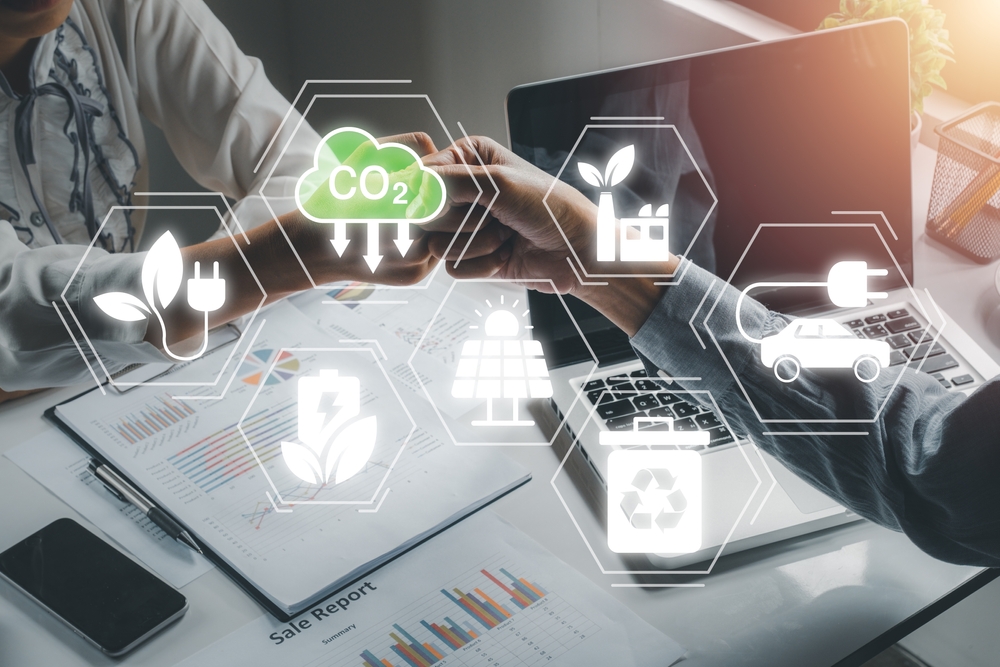In January 2023, Washington state’s new cap-and-invest program launched, which originated from the Washington Legislature’s passage of a package of historic legislative and budget proposals to combat climate change and prepare the state for the future low-carbon economy. The Legislature provided the Washington State Department of Ecology (Ecology) with the authority and funding to develop rules and requirements to implement three major climate bills:
“Together with existing policies advancing clean energy and zero-emission vehicles, these new laws put Washington on a path toward achieving the greenhouse gas [GHG] limits set in state law: 45% below 1990 levels by 2030, 70% below 1990 levels by 2040, and 95% below 1990 levels and net-zero carbon emissions by 2050,” states the cap-and-invest program website.
The cap-and-invest program sets a limit, or cap, on overall carbon emissions in the state and requires businesses to obtain allowances equal to their covered GHG emissions. These allowances can be obtained through quarterly auctions hosted by the Ecology department or bought and sold on a secondary market (just like stocks and bonds). The cap will be reduced over time to ensure Washington achieves its 2030, 2040, and 2050 emissions-reduction commitments, which means fewer emissions allowances will be issued each year.
Facilities generating more than 25,000 metric tons of carbon dioxide equivalent are required to register for the program through the Ecology department. Registration requires entities to submit detailed information, including corporate structure, corporate associations, use of cap-and-invest consultants, and designated account representatives.
Exempted emissions from the program include:
- Agricultural use fuels
- Aviation fuels
- Marine fuels combusted outside the state
- Fuels exported out of the state
The Ecology department estimates approximately 75 percent of its statewide emissions will be covered by the program.
“Some critics have expressed concern that many of the state’s largest emitters have been provided a separate emissions reduction pathway,” says a Jones Day article in Lexology. “Washington’s legislature has designated certain core industries that are vulnerable to market fluctuation as Emissions-Intensive, Trade Exposed (“EITE”) industries. EITE facilities, which are largely within the manufacturing sector, will be provided with no-cost emissions allowances until 2034. While critics argue that the carve-out for EITEs will slow Washington’s overall emissions reduction process, proponents believe that such measures are critical to protecting Washington’s economy against the risk of those businesses moving operations out-of-state. Natural gas and electric utilities will also be eligible for no-cost allowances.”
The state will use the Western Climate Initiative, Inc., auction platform, and California, Quebec, and Nova Scotia are the other participating jurisdictions.
The first emissions allowance auction occurred February 28, 2023, and is conducted by a sealed-bid process.
“Program participants may also earn offset credits by investing in projects that result in real, permanent, quantifiable, verifiable, and enforceable [GHG] reductions,” Jones Day adds. “Four offset protocols have been adopted from California’s cap-and-trade program: U.S. forestry projects, urban forestry projects, livestock projects, and ozone-depletion projects. In the 2023-2026 compliance period, participants may cover up to 5% of their emissions with offset credits, with an additional 3% available from projects on federally recognized Tribal lands. In subsequent compliance periods, the limits will drop to 4% and 2% respectively.”
The cost of noncompliance with the program is steep: Authorized fines are up to $50,000 per violation per day.

